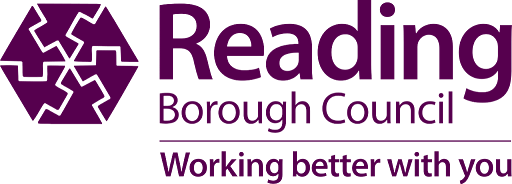Still Time to Take Part in Reading's Biggest Ever Transport Consultation
THERE's still time to have your say in Reading’s biggest ever public consultation on transport.
More than 2,000 responses have already been received after the Council asked people to help shape a future vision for transport in the town. Consultation leaflets have been sent to every household in Reading directing them to https://www.pclconsult.co.uk/transport2036 where people can fill in the survey. Meetings with transport operators, neighbouring local authorities and the Climate Change Strategy working group have already taken place, as well as public drop in events in South Reading, Caversham and the Oxford Road. Two more public events are planned in September at the following venues:- Wednesday Sep 4th (3pm to 7pm) Waterhouse Chamber, Reading Town Hall
- Tuesday Sep 10th (7am to 10am) Reading Station Forecourt
Tony Page, Reading Borough Council’s Lead Member for Strategic Environment, Planning and Transport, said:
“We have had an encouraging number of responses to the consultation so far but we want even more people to make their views known. We know transport is Reading’s biggest talking point and this is the opportunity for people to contribute to a future transport plan for Reading. “People will soon be returning from their summer breaks and schools will also be returning. Reading’s roads will become much busier again, with more queues and increased pollution levels. It is a good time for everyone to reflect on how the town should tackle the congestion and air quality in future years. The thousands of new homes being built in and around the town will add to the number of journeys on a road network which is already at capacity. It is not something we can ignore and this public consultation is about getting people who live and work in Reading, as well as those travelling through the borough, to contribute and be part of the solution.”Councillor Adele Barnett-Ward, Chair of the Cleaner Air and Safer Transport Forum, said:
“I want to thank the hundreds of people who have taken the time to fill in the online survey. It is important we get as many responses as possible so that Reading’s new Local Transport Plan reflects the views of people who live and work here. “The survey is designed to gather information on how people choose to travel, why they make those choices and what would convince them to consider alternatives in the future. Now is the time to contribute to the conversation.” With one of the UK’s fastest growing economies, Reading is home to a large number of local, national and international companies. It is the major centre for employment, leisure and education in the Thames Valley region. Demand for new homes has never been higher. While welcoming this success, it places a real strain on the town’s roads and transport infrastructure. Reading continues to face serious challenges in terms of commuter congestion and poor air quality, which impacts on the health of local residents. They include:- Major roads such as the IDR (inner distribution road) carry ‘through traffic’ (without stopping in Reading) that creates additional noise and air pollution. Our analysis shows up to a third of trips made in peak periods could avoid using the IDR as a through route, if enhanced orbital routes were provided.
- 86% of people who commute into Reading for work from outside the borough travel by car
- Reading has a number of hotspot locations which currently exceed national legal limits for Nitrogen Dioxide (NO2) including on the Oxford Road, Prospect Street, Cemetery Junction/London Road, Friar Street and locations on the IDR.
- Reading’s population will increase by around 12% from 162,666 in 2016 to 181,900 in 2039
- 671 new homes are planned in Reading every year to 2036 with 801 every year in neighbouring Wokingham and 990 every year in South Oxfordshire.
- 5.4% of adults in Reading cycle three times a week and just over a quarter walk three times a week
Notes to Editor:
Reading Borough Council and its partners have delivered a large number of major sustainable transport schemes in recent years. These include the major redevelopment of Reading Station; the upgrade of Junction 11 of the M4; Mereoak Park and Ride; the first phases of South Reading’s Mass Rapid Transit (MRT) route and Christchurch Bridge, the pedestrian and cycle bridge over the Thames. The new Elizabeth line, when opened, will provide direct services to central and east London. More recently with Network Rail, the Council has widened and lowered Cow Lane, enabling two-way traffic of lorries and buses to pass under the new bridges for the first time ever. The Council-owned bus company, Reading Buses, goes from strength to strength, providing one of the cleanest, most modern and most extensive bus networks in the UK. The Council is also working to deliver a brand new railway station at Green Park, major improvements to Reading West Station and a new cross-Reading (and Berkshire) cycle route. Reading’s new Local Transport Plan will include borough-wide strategies for car parking and air quality, as well as traffic management measures, particularly those to address through traffic using Reading as a short cut with no origin, destination or purpose in the borough. Strategies which may form part of the plan, and which are already in operation in other parts of the country, include possible ‘demand management’ measures such as a Congestion Charge, Workplace Parking Levy (WPL) and/or Clean Air Zone (CAZ). No decisions on future options have been taken at this time while the transport consultation exercise is ongoing. All feedback will be considered before a draft Local Transport Plan is created in the autumn and consulted on again in Spring 2020.